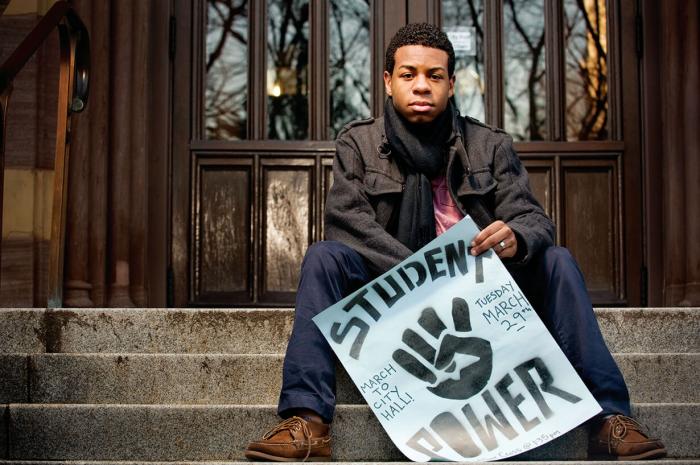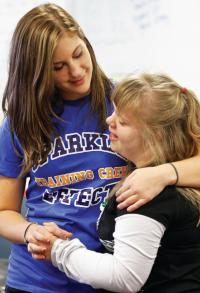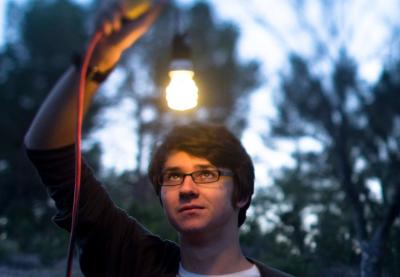Like adults, many young people express concern about global warming. Like adults, most feel helpless to do anything about it. Not Alec Loorz of Ventura, Calif. At age 12, after seeing Al Gore’s documentary An Inconvenient Truth, Loorz formed a nonprofit organization called Kids vs. Global Warming. He now gives presentations across the United States, reaching kids and adults alike with his message of awareness and action.

Now 16, Loorz spent much of the past year encouraging students across the nation to sign a petition in support of lawsuits seeking to force the federal government and states to cut greenhouse gas emissions. He organized the iMatter campaign to spur young people to take action on this critical issue.
“Youth are some of the most creative, dedicated and passionate people on this planet, and we know that climate change will affect us more than anyone else,” Loorz says. “We are ready to transition to a society that values our survival just as much as short-term interests, like money and power.”
Meanwhile, in New Haven, Conn., Wilbur Cross High School student Isaiah Lee worked to bring about change at the local level by leading more than 40 students to rally at City Hall to protest teacher layoffs. “It’s important to have young people’s perspectives on these issues,” Lee says. “We are the ones who are ultimately affected by the decisions made by the authorities.”
Lee says that his political activism, which included meeting with New Haven Mayor John DeStefano Jr., was one of the best learning experiences he has ever had. “I’ve learned good communications skills,” he says, “how to research and present an argument, and how to mobilize people on important issues.”
Turn on just about any news program today and you’ll see the power of young people, from Occupy Wall Street to Arab Spring protests in the Middle East. Using the Internet and social media to spread ideas almost instantly, these young activists helped create unthinkable change in a remarkably short time.
What inspires young people to become activists? Events such as wars or regime changes obviously raise high emotions. But Alec Loorz and Isaiah Lee chose to get involved because they saw a need and felt compelled to take action.
How Schools Can Help
Young Americans have a long track record as activists. Among other things, they played a key role in the civil rights movement of the 1950s and 1960s. And young people were actively involved in protests against the Vietnam War and the war in Iraq.
Schools and teachers can help inspire students to get involved as activists. For instance, many high schools have diversity clubs designed to promote awareness and activism around the issue of developing respect for all people, regardless of race, religion, gender, sexual orientation, mental or physical aptitude, nationality and other traits. Many schools also have clubs that focus on specific areas of activism.
More than 500 schools across the country have Amnesty International USA groups, which organize a wide range of activities to raise awareness about various human rights issues. For instance, in May 2011 about 50 students at Townsend Harris High School in Queens, N.Y., lined the main entrance of the school, bearing prosthetic bellies and carrying signs displaying statistics about maternal deaths worldwide. The demonstration was part of a weeklong effort to raise awareness of maternal health issues.
Becoming involved as activists “not only is a crucial part of students’ learning and core competencies around critical thinking, but it also allows them to have an impact on critical issues of the moment,” says Cynthia Carrion, national youth program coordinator for Amnesty International USA. “They are actually doing community organizing, and this civic engagement makes for well-rounded students and lays the foundation for future opportunities as well.”

Schools or students interested in becoming involved as activists can visit the website of Do Something, a nonprofit organization that motivates young people to take action on a wide variety of social change issues. DoSomething.org offers dozens of causes to choose from and has support from many corporations and from celebrities such as Nick Cannon and Demi Lovato. The organization also provides grants and awards to support outstanding young activists.
Build an Activism Tool Kit
Focus on the tactics and strategies employed when teaching about social movements, and encourage students to build their own tool kit for action.
Take Action
Set up a special bulletin board in your class and use it to post information about ways students can get involved in local service. Encourage them to post items too.
At the 2011 Do Something Awards ceremony in August, 18-year-old Sarah Cronk of Bettendorf, Iowa, received the $100,000 grand prize for her project, the Sparkle Effect. After watching her older brother struggle to fit in during high school because of his disabilities, she formed an inclusive cheerleading squad at her school. Together with another squad member, she then founded the nonprofit Sparkle Effect, which has generated more than 25 similar squads throughout the United States and South Africa.

Simply Go for It
From protecting the atmosphere to protesting teacher layoffs to making school activities more inclusive for all students, young people continue to seek ways to make the world a better place, and schools can help spark their enthusiasm. Over time, students can see how the choices they make and the actions they take can have lasting effects in their school, their community and even throughout the world.
“Young people always ask me how they can get involved or ‘do what I did,’ and all I can think to say is simply go for it,” Loorz says. “When I started, I knew nothing about what I was doing. I had no money, no connections, nothing. All I did was realize what I was called to do and go for it, and opportunities started coming almost by miracle. I know that if we all find this passion for ourselves, people will listen to us, doors will begin to open, and we really will be able to make anything happen.”
